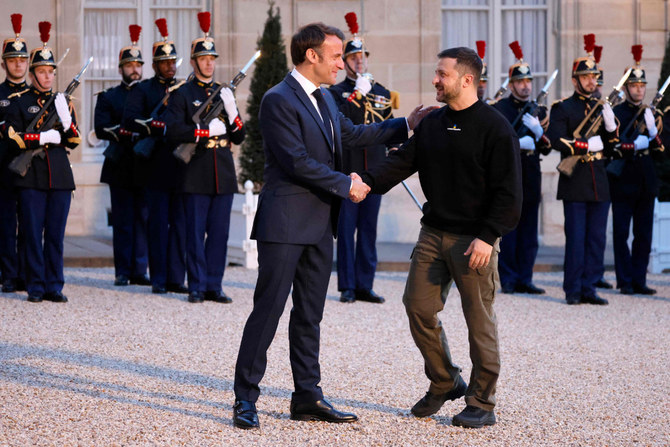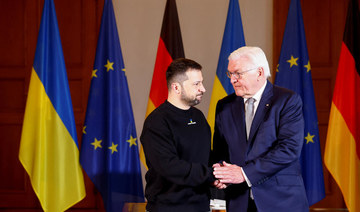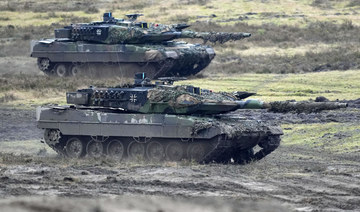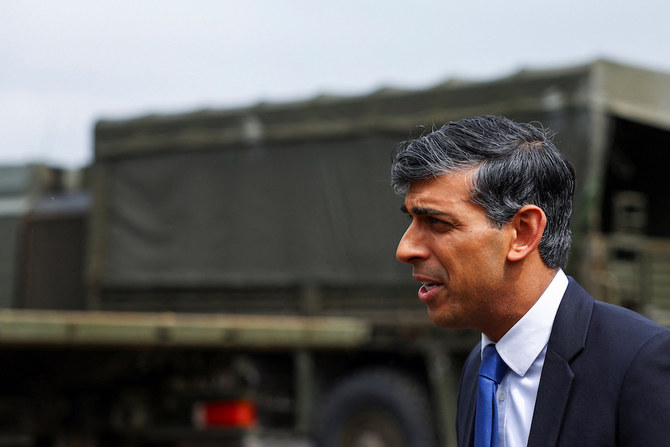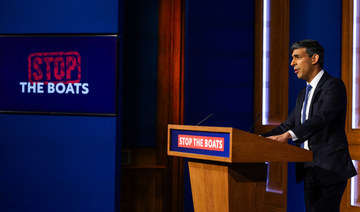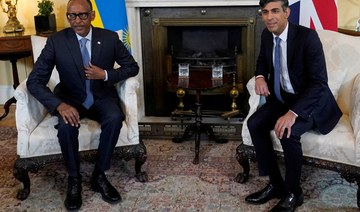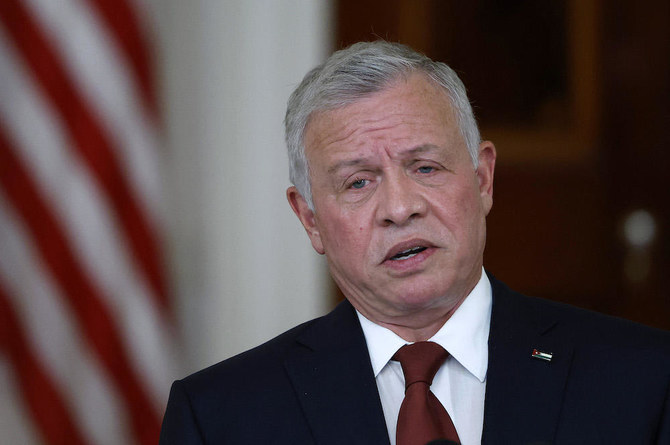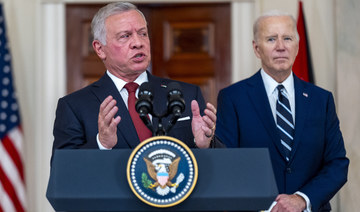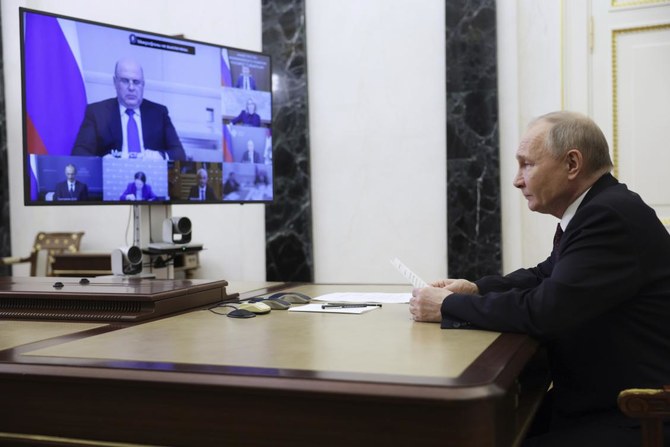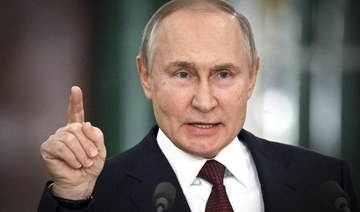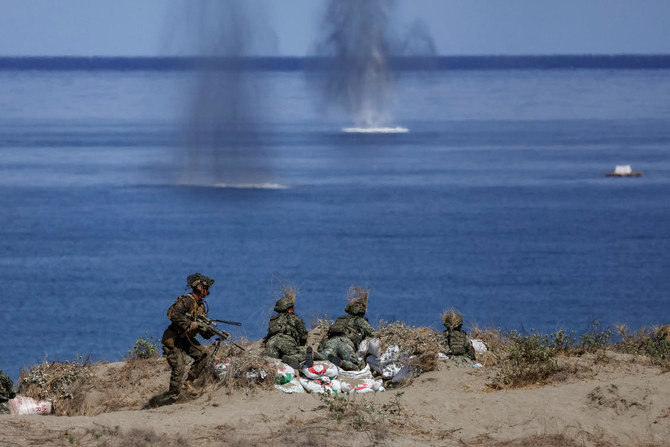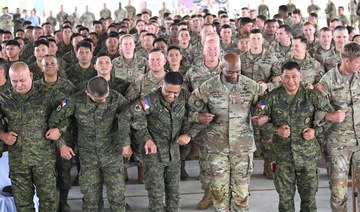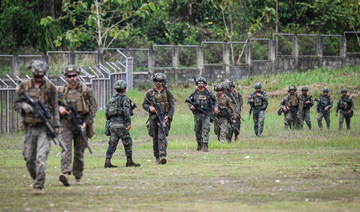PARIS: France will send to Ukraine in the coming weeks dozens of armored vehicles and light tanks, including the AMX-10RCs fighting vehicles, according to a joint statement issued after President Emmanuel Macron’s talks with Ukraine’s president.
After a working dinner that lasted more than three hours between Macron and Volodymyr Zelensky, the French presidency indicated that Paris was also concentrating its efforts on supporting Kyiv’s air defense capabilities against Russian strikes.
The visit to Paris formed part of Zelensky’s whirlwind weekend tour of several key European allies to drum up military and financial support ahead of an expected major Ukrainian counter-offensive against Russian forces.
After securing a bumper $3 billion new military package from Germany over the weekend, Zelensky said in Berlin on Sunday that Kyiv and its allies could make a Russian defeat “irreversible” as early as this year.
Macron reaffirmed to Zelensky that Paris will continue to provide political, financial, humanitarian and military support to Ukraine for as long as necessary, according to the statement.
A source at the French presidency told reporters that additional, more modern defense systems would be made available to Ukraine.
There is currently no question of delivering fighter jets to Kyiv, as it has requested, the source added.
The French AMX-10RCs vehicles have high speed and manoeuvrability, allowing them to move quickly on the battlefield and change positions. Ukraine’s Defense Minister Oleksii Reznikov called them a “sniper rifle on ... fast wheels.”
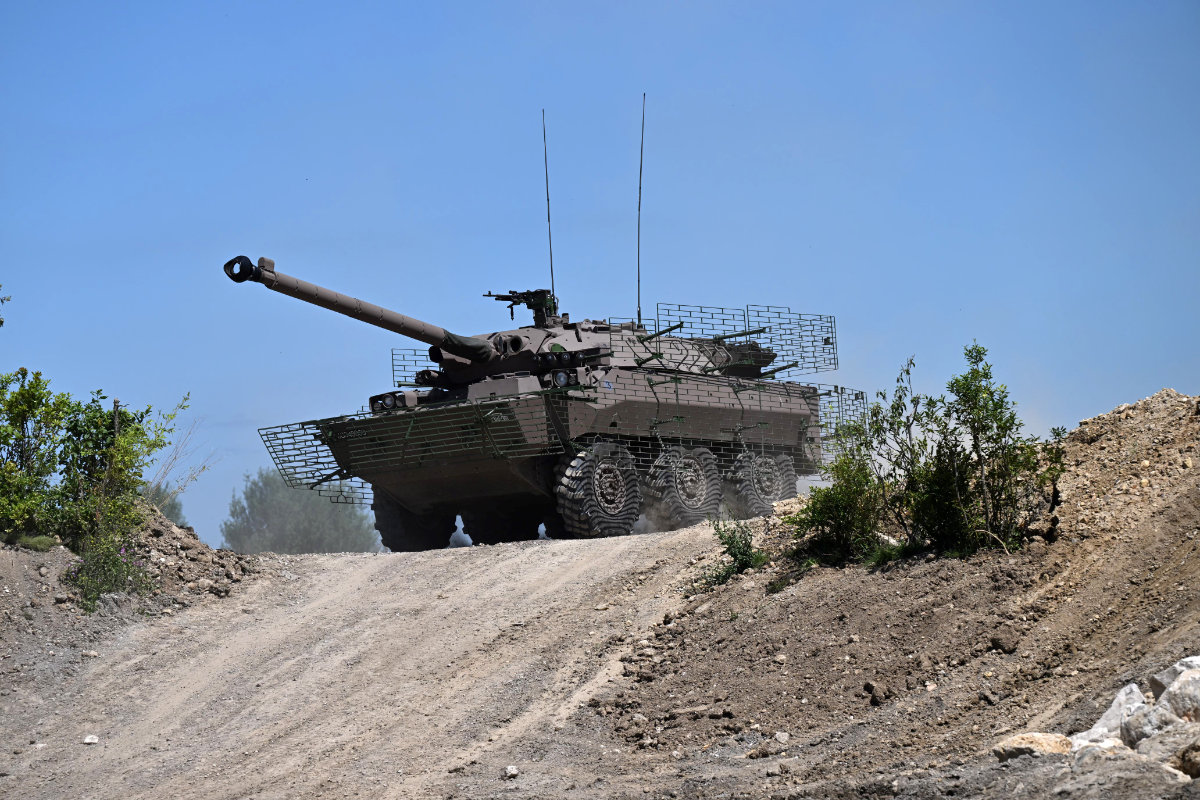
France's AMX-10 RC armored vehicle are among the weapons Ukraine is getting from France to help in the campaign to drive out Russian invaders. (AFP file)
Zelensky flew to Paris late Sunday after accepting a prize for his country’s fight for “European ideals” during a visit to Germany.
“Paris. With each visit, Ukraine’s defense and offensive capabilities are expanding,” Zelensky tweeted as he arrived at the air base of Villacoublay southwest of Paris.
“The ties with Europe are getting stronger, and the pressure on Russia is growing.”
“Ukraine incarnates everything the European idea is living for: the courage of convictions, the fight for values and freedom, the commitment to peace and unity,” said EU chief Ursula von der Leyen at the Charlemagne award ceremony in the western city of Aachen.
“President Zelensky and the people of Ukraine are fighting for the values and the obligation that this prize embodies. And in doing so, they are also fighting for our own freedom and our values,” she said in a message echoed by Polish Prime Minister Mateusz Morawiecki.
For German Chancellor Olaf Scholz, Russia’s war on its neighbor had “cemented one clear realization: Ukraine is part of our European family.”
Zelensky received the prize while on his first trip to Germany since Russia’s invasion, a day after meeting Italian leaders and Pope Francis in Rome.
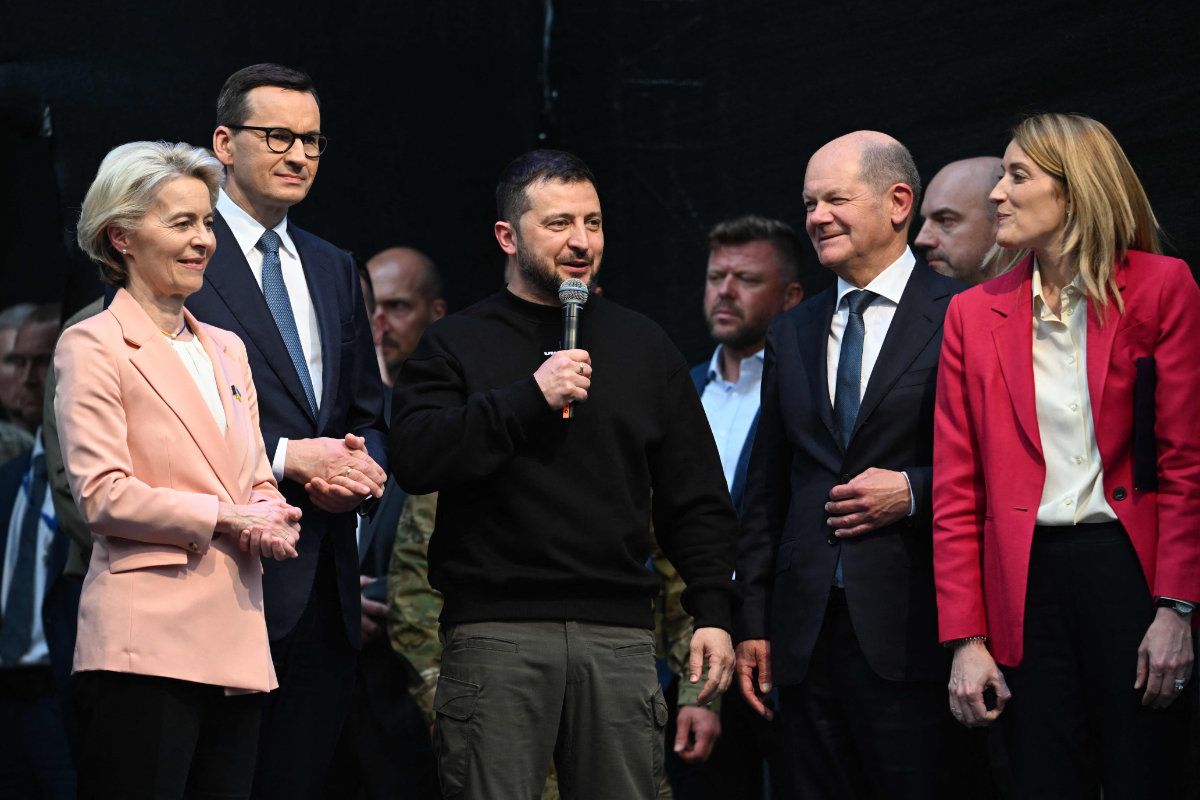
Ukraine's President Volodymyr Zelensky (C) speaks next to (L-R) European Commission President Ursula von der Leyen, Poland's Prime Minister Mateusz Morawiecki, German Chancellor Olaf Scholz and European Parliament President Roberta Metsola after he was awarded the International Charlemagne Prize of Aachen 2023 on May 14, 2023 in Aachen, Germany. (Pool/AFP)
The weekend diplomatic tour comes ahead of an EU summit in Reykjavik and a gathering of G7 leaders in Japan.
Zelensky won extended standing ovations at the Aachen ceremony, during which EU leaders also vowed to support Ukraine along its road to joining the bloc.
Calling Germany a “true friend and reliable ally” to Ukraine as it battles to repel Russian invaders, Zelensky held separate talks with Scholz and President Frank-Walter Steinmeier.
Berlin on Saturday unveiled a new military package for Kyiv worth 2.7 billion euros ($3 billion), its biggest yet for Ukraine and hailed by Zelensky as a “powerful support.”
“Now is the time for us to determine the end of this war this year. This year, we can make the aggressor’s defeat irreversible,” said the Ukrainian leader.
Anticipating the president’s arrival in Aachen, several hundred Ukraine supporters rallied holding blue balloons and wearing yellow-and-blue flags around their shoulders.
Olga Zelenska, 37, told AFP she came to show her support for her country.
“We are proud,” she said, when asked about the Charlemagne award.
Ukrainian forces have been training troops and stockpiling Western-supplied munitions and hardware that analysts say will be key to reclaiming territory captured by Russia.
Germany, once accused of reticence in supplying military gear to Ukraine, has become the second-biggest contributor of tanks, rockets and anti-missile systems to the country, after the United States.
Early on in the conflict, Kyiv had accused Germany of being too accommodating to Russian President Vladimir Putin, while Berlin’s reliance on Russian energy had proved problematic.
But on the eve of Zelensky’s visit, Berlin said it would send Ukraine more firing units and launchers for the Iris-T anti-missile system, 30 additional Leopard 1 tanks, more than 100 armored combat vehicles and over 200 surveillance drones.
Scholz on Sunday reiterated Berlin’s firm backing, telling Zelensky directly: “We will support you for as long as it is necessary.”
Zelensky said he would urge Scholz to support Ukraine’s bid for fighter jet deliveries, though he did not specify if he was seeking aircraft directly from Germany.
On the front line, Kyiv said Ukrainian forces had captured more than 10 Russian positions on the outskirts of the flashpoint town of Bakhmut.
Russia admitted that two of its military commanders had been killed in combat near the town, where fighting has been raging for days.
In a rare announcement of losses on the battlefield, Russia’s defense ministry said the commander of the 4th motorized rifle brigade, Vyacheslav Makarov, and Yevgeny Brovko, deputy commander of the Army Corps for military-political work, had been killed in fighting in eastern Ukraine.
The head of Russia’s private Wagner mercenary group Yevgeny Prigozhin again accused the Russian army of inaction around Bakhmut.
In a post published by his press service, Prigozhin slammed the “airborne forces” of not backing his men as the defense ministry had claimed.
“I didn’t see them... I don’t know where they are and who they are helping,” said Prigozhin.
Elsewhere, Moscow said Russian forces had struck Western arm depots and Ukrainian troops in the western city of Ternopil and the eastern town of Petropavlivka.




